The archaeological research of the medieval town of Český Krumlov
Besides the recent archaeological remains there are displayed several tens of pottery fragments and Dutch stove tiles ( dating from the 15th -16th century ) excavated during the restoration work in the historical centre of the town of Český Krumlov ( in 1970´and 1980´s ) in District National History and Geography Museum. What one has found , for example, workers or house owners, has been consigned to the museum (The archaeological research in the town of Český Krumlov).
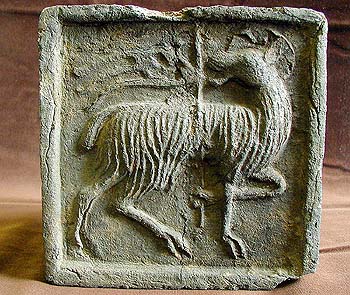
|
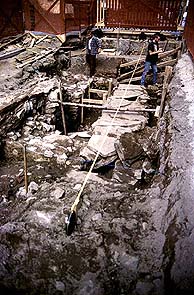
|
Any real archaeological research work in the area of the town had not been done until the beginning of early 1990´s. The first professional archaeological excavation was done in the year 1990-1992, thanks to Pavel Břicháček´s archaeological research (The Primeval and the Early Middle Ages Settlements in the area of the town of Český Krumlov). Besides a large number of valuable documentation dating from the Middle Ages and the Modern Period , he found and demonstrated by documentation , for example, the way of the Vltava riverside regulation under the Hotel Růže (The Hotel Roes) terraces (No. 154 in Horní Street) or medieval outflowing layers in Masná Street. Cultural discoveries uncovered in the year 1991/92 in the former Low Manorial Garden (The archaeological research in the Brewing Garden) proved the settlement origin in the area during the town establishment in the 13th century and helped to back - date the fortification wall origin on the Vltava riverside (14th century).
The archaeologists (the South Bohemia Museum in České Budějovice and the District National History and Geography Museum in Český Krumlov) started doing archaeological researches in the area of the town of Český Krumlov. Since then much excavation work is done while restoring historical buildings, particularly citizen houses, civils and many other interventions every year.
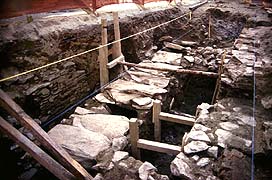
|
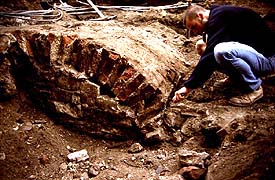
|
The archaeologists (the South Bohemia Museum in České Budějovice and the District National History and Geography Museum in Český Krumlov) started doing archaeological researches in the area of the town of Český Krumlov. Since then much excavation work is done while restoring historical buildings, particularly citizen houses, civils and many other interventions every year.
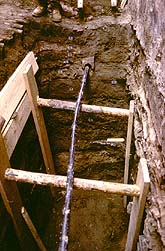
|
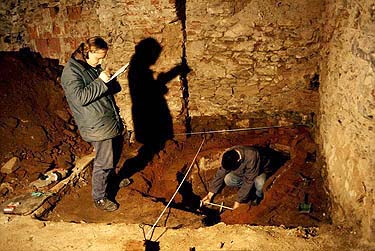
|
Archaeological researches in houses No. 20 Panská Street, No. 27, No. 25 and No. 29 in Radniční Street, No. 2, No. 15 Svornosti Square, No. 23 and No. 15 in Latrán, No.74 Široká Street seem to have brought the most important and interesting knowledge of the town of Český Krumlov and lifestyle in the Middle Ages and the Modern Period so far. We gained some very valuable information about our ancestors during the archaeological research of the Modern Period graveyard of Plešivec while providing civils excavation documentation in Radniční Street and Parkán Street or during the archaeological research of the block of houses yard among Radniční, Panská, Dlouhá and Soukenická Street.
(me)
Further information :
The
Primeval Castle Settlement in the town of Český Krumlov
The
archaeological research of the Český Krumlov medieval
Castle
The
archaeological research of the region of Český
Krumlov

